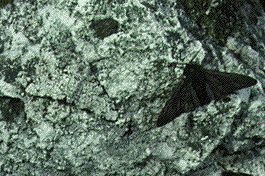The theory of natural selection (part 1) - Are there examples of rapid evolutionary change?

Peppered moths: a classic example of rapid evolutionary change
The usual form of the peppered moth Biston betularia in northern Europe has a light 'peppered' pattern of coloration. The moth rests on tree branches and its color pattern camouflages it against predatory attack. The camouflage only works against the right background and birds are more likely to eat poorly camouflaged moths.
The light coloration of tree branches is mainly caused by lichens that grow there. Smoke pollution in the industrial revolution in the UK killed these lichens near to industrial areas, leaving tree branches black. At about this time, around 1830, a 'melanic' form of the peppered moth becomes increasingly common in contemporary moth collections. The melanic form is camouflaged on dark tree branches. Through the 19th century, the melanic form increased in frequency until, near industrial regions, it was the normal type of the moth. The increase was almost certainly driven by natural selection.
The moths satisfy all four conditions for natural selection:
• they reproduce
• their color pattern is inherited
• there is variation in their color patterns
• the different forms have different fitnesses
The image opposite shows the original and melanic forms of the Peppered moth. In this image both moths are on lightly colored tree branches and it is the melanic form which is without camouflage.
| Next |



